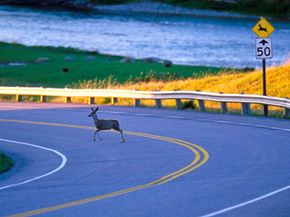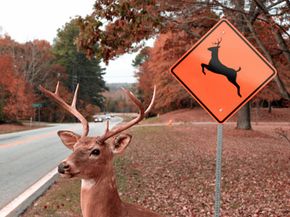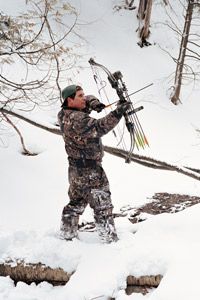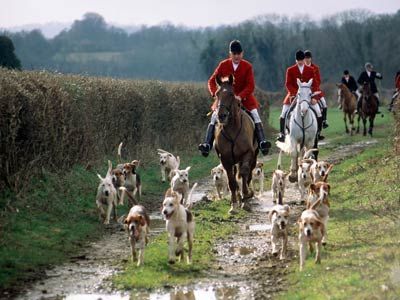It's happened to many drivers and might have happened to you, too. You're on a dark, suburban road, when all of a sudden something leaps out directly in front of you. Before you have a chance to think, you slam on the brakes and find yourself face-to-face with a wide-eyed, startled deer.
As your heart races, you can't help asking yourself, "What if there was a car right behind me? What if the road was icy and I skidded into oncoming traffic? What if I hit the deer and it came flying through the windshield?"
Advertisement
Sadly, hundreds of people die every year in deer-related car accidents. In fact, the number of fatal crashes with deer and other animals has more than doubled in the past 15 years -- in fact, there were 223 fatalities in 2007 [source: Bruce]. According to statistics from State Farm insurance, an estimated 1.5 million vehicles collide with deer every year in the United States, causing $1.1 billion in property damage [source: CNN Money].
One of the most amazing statistics is that deer-car accidents increase in frequency during the last three months of the year. In Charlottesville, Va., for example, there were 81 deer-related accidents from January to September 2008. In 2007, there were 93 accidents during the months of October, November and December alone [source: Shenk].
Some people think that the increase in car accidents is directly related to the start of hunting season. The logic is that hunters scare deer out of their natural habitats and onto the roads. The real reason for so many accidents has much more to do with mating season -- not hunting season -- and a dangerous overpopulation of deer in many suburban areas.
Even when pursued by a hunter or other predator, a deer will rarely leave its home territory [source: Maryland Department of Natural Resources]. In the late fall, however, deer begin straying far from their homes in search of potential mates. This seasonal wandering instinct is what causes deer to cross paths more frequently with humans.
Exacerbating the problem is that deer populations in many suburban areas are out of control. Deer thrive in suburban developments, where they can feed heartily on rich plants and flowers and seek cover in small patches of forest. Other than humans, few predators exist in the suburbs, allowing deer numbers to boom.
Many deer hunters believe that they are performing a valuable service by thinning unrestrained deer populations. But is that really true? Does conventional deer hunting reduce overall deer populations and lead to fewer deer-car accidents? We'll explore that issue in the next section.
Advertisement

















